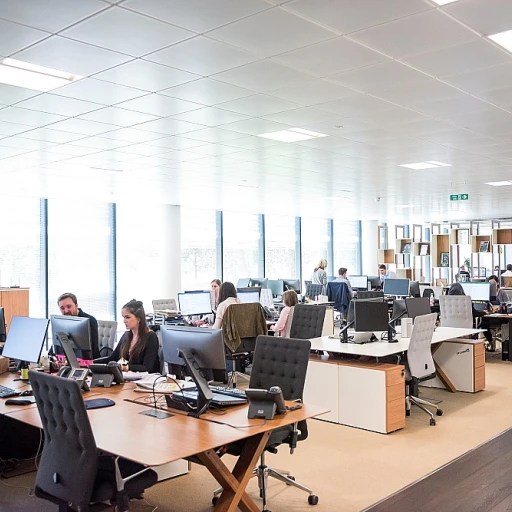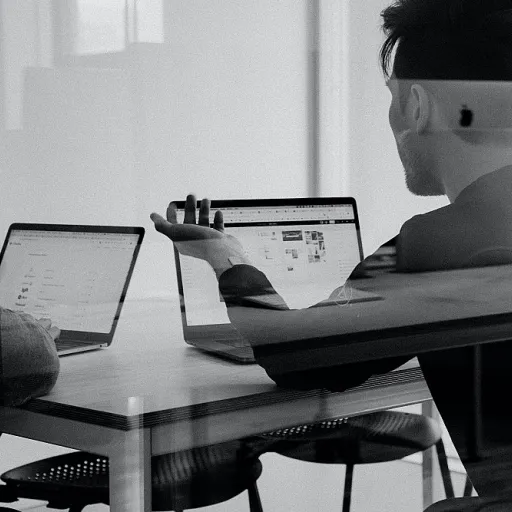
Understanding the 'Work to Live' Mindset
Diving into the "Work to Live" Mindset
The concept of "work to live" has gained traction in recent years, as more people shift their focus from centering their lives around work, to prioritizing their personal lives, family, and overall well-being. In essence, it's about finding a happy medium between professional and personal life, ensuring that one's job supports, rather than dominates, personal happiness and fulfillment. This mindset encourages individuals to view work as a means to an end—the ability to afford the life they want to live, rather than an end in itself. People want to use their working hours effectively and have enough personal time to enjoy living, rather than spending their days at the job, only to feel exhausted when it's time to unwind. Interestingly, this approach doesn't mean people don’t love their work or lack dedication; rather, they're seeking a life balance that allows them to maintain high energy levels for both professional and personal pursuits. As living costs rise, and the pressure to earn money increases, understanding how to balance work and life becomes essential for employee satisfaction and engagement. This shift in focus can lead to several benefits, including increased motivation and happiness in both work and personal spheres. However, embracing this live mentality requires systemic changes within organizations. As businesses strive to enhance employee engagement, they need to understand how the "work to live" philosophy interacts with workplace policies and culture. For more insights, you can explore understanding the duration of long-term disability before employment termination, which highlights how job policies impact personal life considerations.The Impact on Employee Engagement
The Influence on Team Dynamics
The shift towards a 'work to live' mindset is reshaping work environments worldwide. As individuals strive for a happy medium between their professional and personal lives, the traditional boundaries of a work day blur. This transformation impacts how employees engage with their roles, leading to a more flexible and dynamic team atmosphere. Striking a life balance becomes a critical element for organizations aiming for high energy and ongoing engagement. When people find balance, they not only excel in their jobs but also carry that positive energy into their personal lives, creating a ripple effect of satisfaction and productivity. Increased autonomy and flexible work hours have become a cornerstone of supporting this philosophy. For instance, businesses allowing employees to take personal time when needed or offering extended vacation days notice a significant boost in morale. Happy employees often demonstrate a deep love for their work, driving business results in previously unimagined ways. This mindset encourages employees to bring their authentic selves to the workplace, fostering a sense of belonging and commitment to the job at hand. When people work in environments that respect their unique life goals, they are more likely to invest their time and effort back into the organization. However, implementing these changes requires a thoughtful approach, which can occasionally face challenges. To learn more about navigating these potential roadblocks and fostering harmony between work and life, the article "Balancing Employee Engagement with Work-Life Harmony" explores valuable insights and strategies. Ultimately, prioritizing work-life balance isn't merely about reducing hours; it's about cultivating a culture where living work doesn't overshadow living life. By anchoring this philosophy, organizations pave the way for employees to truly flourish in and out of the workplace.Challenges in Implementing Work-Life Balance
Finding Harmony Amidst Professional Demands
Achieving a healthy work-life balance is not without its share of difficulties. While the 'work to live' philosophy encourages this harmonious integration, applying it in practice involves a fair amount of challenges. People frequently grapple with time management, as the demands of a job sometimes overshadow personal life commitments. One of the main obstacles is the inflexible structures in many businesses which can lead to a rigid workday schedule. When employees feel they don't have personal time, their overall work engagement can suffer. This notion, however, contrasts with the belief that well-managed personal time off or vacation days can significantly recharge individuals, making them more high energy and productive when they return to work. Moreover, societal expectations also play a role. For many, the idea that one must constantly live for work to achieve professional success is hard to shake off, creating internal conflict. Love for one's work is crucial, but when the work begins to consume all available hours, it may start to impinge on time reserved for family and personal interests. Employers often face challenges in creating supportive environments where employees can thrive both professionally and personally. There is an ongoing debate about whether practices like micromanaging are detrimental (source) to finding that happy medium between life and work. It suggests that not only policies but also corporate culture and management styles play significant roles in achieving the desired balance. Ultimately, finding harmony in the work-live continuum is about setting priorities, reevaluating job demands, and adapting the live mentality to include both professional and personal aspirations. All these elements are crucial in fostering an environment where people don't feel the pressure of living work, but rather enjoy a balanced life work.Strategies for Employers
Creating a Supportive Environment
Employers play a crucial role in fostering a work environment that embraces the 'work to live' philosophy. A supportive environment can significantly enhance employee engagement, leading to a more motivated and productive workforce. Here are some strategies that can help:
- Flexible Working Hours: Allowing employees to have flexible work hours can help them manage their personal and family commitments more effectively. This flexibility can lead to higher job satisfaction and a better work-life balance.
- Encouraging Time Off: Promoting the use of vacation days and personal time is essential. Employees need time to recharge and pursue personal interests, which can result in higher energy levels and a more positive attitude towards their work.
- Promoting a Healthy Work Culture: A culture that values work-life balance can make employees feel valued and respected. Encouraging breaks during the work day and recognizing the importance of personal life can help create a happy medium between work and living.
- Providing Resources for Personal Development: Offering opportunities for personal growth and development can make employees feel more engaged and invested in their jobs. This could include workshops, training sessions, or even support for pursuing further education.
Communication and Feedback
Open communication between employers and employees is vital for understanding individual needs and finding balance. Regular feedback sessions can help identify areas where the company can improve its support for work-life balance. Listening to employee perspectives can also provide valuable insights into what works and what doesn’t.
Implementing Technology Wisely
Technology can be a double-edged sword in the workplace. While it can enhance productivity, it can also blur the lines between work and personal life. Employers should encourage the use of technology to facilitate work without intruding on personal time. Setting clear boundaries for after-hours communication can help employees disconnect and enjoy their personal lives.
By adopting these strategies, employers can create a work environment that not only supports the 'work to live' mindset but also enhances overall employee engagement. This approach not only benefits the employees but also contributes to the success of the business.
Employee Perspectives
Employee Voices on Work-Life Integration
Striking the right balance between work and personal life is a crucial aspect of employee satisfaction in today’s professional landscape. Employees who embrace the 'work to live' philosophy often express the importance of having sufficient time for family, personal interests, and rest. This balance ensures they are not merely living to work, but working to live fulfilling lives. The idea of a happy medium is at the core of many employee perspectives. They value flexibility in their work schedules, allowing them to redistribute work hours when needed. Personal time is cherished, and employees consider it vital for maintaining high energy and a positive attitude during work hours. For many, vacation days are not just a luxury but a necessary break from the daily routine; they enable a refresh that enhances productivity upon return. Employees often appreciate businesses that respect the separation of work and personal life. This respect is typically reciprocal—those who feel that their employers support their life balance are more likely to invest discretionary effort in their jobs. The 'live mentality' resonates strongly with individuals seeking to allocate time efficiently between professional responsibilities and leisure activities. However, achieving this equilibrium can be challenging. Many employees struggle with self-imposed pressures to prove their commitment to their job by working long hours or checking emails outside of work time. Encouraging a culture where people work effectively without burning out is key to fostering long-term satisfaction. Listening to employees' experiences and preferences plays a significant role in understanding their engagement levels. Such insights also guide managers in formulating strategies that align business goals with employee well-being, ensuring everyone moves towards living a happy, balanced life.Measuring Success
Assessing the Effectiveness of Work-Life Balance Initiatives
Measuring the success of implementing a work to live philosophy in the workplace can be complex. Yet, it is essential to understand how these changes impact both the business and its employees. Here are some ways to evaluate success:- Employee Satisfaction Surveys: Gauge the overall contentment of employees with their work-life balance by conducting regular surveys. These surveys can reveal whether people are happy and find balance in their work and personal life. High satisfaction levels often indicate a successful balance.
- Retention Rates: Monitoring retention rates can provide insights into how well work-life balance is being embraced. A decrease in turnover may suggest that employees feel valued and supported in finding the happy medium between work hours and personal time.
- Productivity Metrics: Evaluate whether employees maintain high energy levels and productivity throughout their work day. If performance remains stable or improves, it may suggest that work-live initiatives are achieving positive results.
- Feedback Mechanisms: Implement formal or informal feedback systems. Encourage employees to share their thoughts on how work-life balance initiatives are impacting their day-to-day work and personal happiness.
- Work Culture Observations: A supportive company culture fosters an environment where individuals don’t live to work but, rather, work to live. Look for signs that people love their work, yet don’t feel compelled to sacrifice their personal life or family time unnecessarily.













